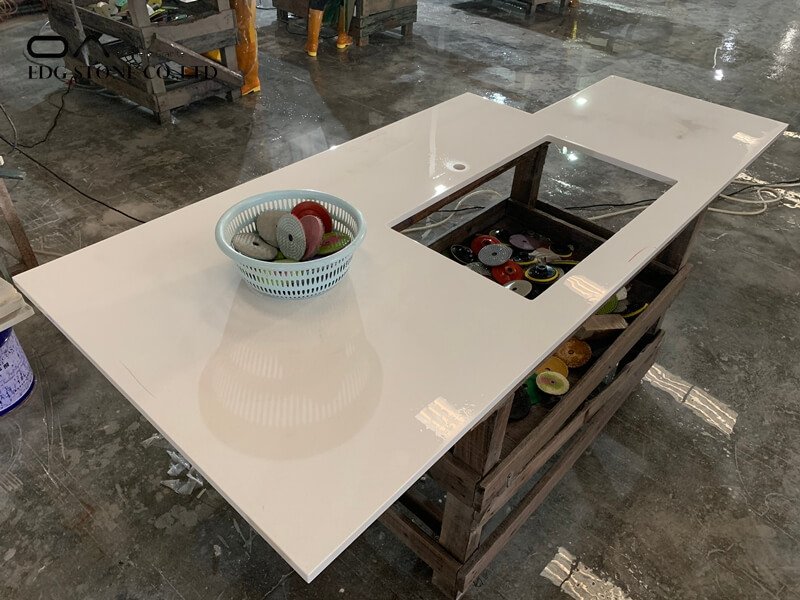Quartz stone has the highest hardness among decorative stones, and general ironware cannot cause damage to its surface. The water absorption rate of quartz stone is also extremely low, and the water absorption rate of qualified plates is 0.02%, which can be said to be almost zero, so there is no need to worry about penetration. Yesterday, the editor also talked to you about all the many advantages of quartz stone, but if the splicing seams are not handled well during processing, it will directly affect the overall aesthetics.
The quartz stone products commonly seen in our lives are mainly quartz stone countertops, and we know that quartz stone is now used in the entire decoration. Quartz stone manufacturers produce plates, and the common specifications are 2440x750x15mm (called small plates in China) and 3000x1600x15mm (called large plates), so the end customers also need stone processors. The most difficult thing to deal with in quartz stone processing is the splicing seam, which is the best splicing method.
Quartz stone splicing should choose the inclined plane anastomosis splicing interface, and the inclined plane of the splicing interface 45° is the best. This process is a big test for the processing personnel’s skills. At present, many quartz stone processors can cut directly with cutting saws. When splicing, the original glue of the same color from the manufacturer should be used for pasting, and the color of the board should be matched before pasting to avoid color differences. Use paper tape to paste on the edges of the two opposite interfaces. In order to avoid unnecessary troubles when the glue contacts the plane to clean up. After finishing the preparation work, apply glue evenly and fix it with an F clamp for about 20 minutes.









